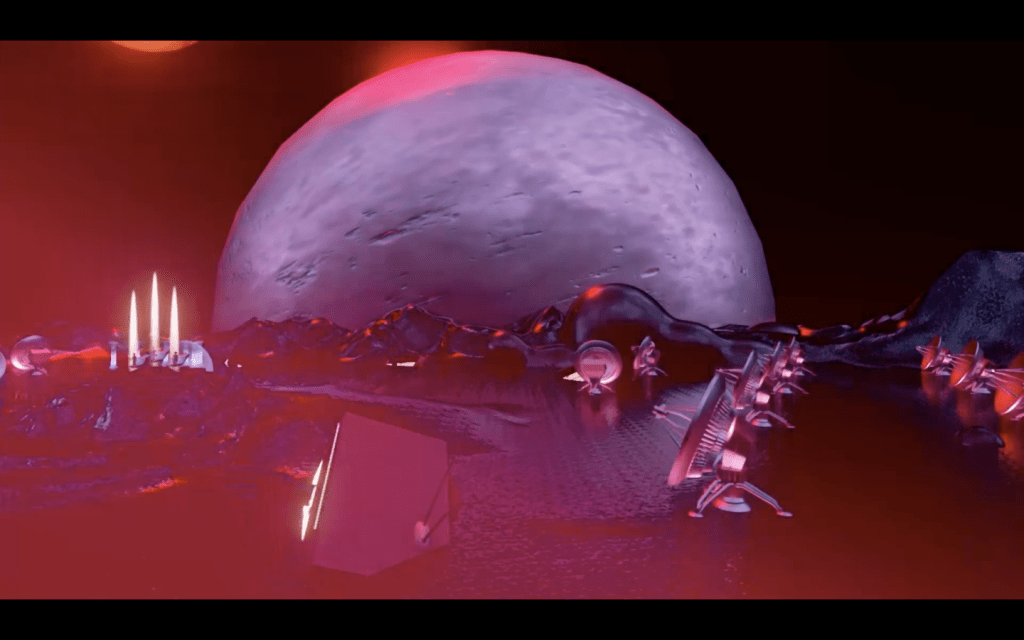
Some of today’s boldest artists are using emerging forms of media and technology to tell stories that reinvent the way we experience the world. Through virtual reality, augmented reality, artificial intelligence, and other immersive media, they’re using new and developing forms of technology to shape what the future looks like and how we understand and interpret it. In doing so, they’re also forging a strong connection between art, technology, and the public interest, showing how these areas reinforce and complement one another—and their profound potential to change the world.
“I want to build creative, artistic, and participatory spaces that call for deep and critical engagement with technology.” —Salome Asega, Artist and Ford Foundation Tech Fellow
Below, discover stories from three artists whose creativity and innovation are leading the way:
Accessibility Statement
- All videos produced by the Ford Foundation since 2020 include captions and downloadable transcripts. For videos where visuals require additional understanding, we offer audio-described versions.
- We are continuing to make videos produced prior to 2020 accessible.
- Videos from third-party sources (those not produced by the Ford Foundation) may not have captions, accessible transcripts, or audio descriptions.
- To improve accessibility beyond our site, we’ve created a free video accessibility WordPress plug-in.
Take Stephanie Dinkins for example: A 2018 Sundance New Frontier Story Lab fellow and 2018 trust resident at Eyebeam, Stephanie is an artist interested in creating platforms for ongoing dialog about artificial intelligence as it intersects the proliferation of knowledge(s), opportunity, and our future histories. She is particularly driven to work with communities of color to develop AI literacy and co-create more inclusive, equitable artificial intelligence.
Accessibility Statement
- All videos produced by the Ford Foundation since 2020 include captions and downloadable transcripts. For videos where visuals require additional understanding, we offer audio-described versions.
- We are continuing to make videos produced prior to 2020 accessible.
- Videos from third-party sources (those not produced by the Ford Foundation) may not have captions, accessible transcripts, or audio descriptions.
- To improve accessibility beyond our site, we’ve created a free video accessibility WordPress plug-in.
Heather Dewey-Hagborg is a transdisciplinary artist and educator, interested in art as research and critical practice. Her controversial biopolitical work includes Stranger Visions, in which she created portrait sculptures from analyses of genetic material collected from hair, cigarette butts, and chewed-up gum found in public places.
Accessibility Statement
- All videos produced by the Ford Foundation since 2020 include captions and downloadable transcripts. For videos where visuals require additional understanding, we offer audio-described versions.
- We are continuing to make videos produced prior to 2020 accessible.
- Videos from third-party sources (those not produced by the Ford Foundation) may not have captions, accessible transcripts, or audio descriptions.
- To improve accessibility beyond our site, we’ve created a free video accessibility WordPress plug-in.
Hyphen-Labs is an international team of women of color working at the intersection of technology, art, science, and the future. Through their global vision and unique perspectives they are driven to create meaningful and engaging ways to explore emotional, human-centered, and speculative design. In the process, they challenge conventions and stimulate conversations, placing collective needs and experiences at the center of evolving narratives.
Their stories capture the essence of each artist’s take on how their work serves the public interest, how they’re helping change the world for the better. As leaders of their craft, they represent a growing field of creators using technology to serve the public good. And while the idea of Public Interest Technology may be new to some of these artists, the ethos of this field—working for the public and in the public interest—is a strong thread that runs throughout all of these creators’ works.
How can art and tech change the world? These artists are living examples, and using their platforms to reinvent the narratives we tell about the human experience, to challenge existing inequalities, and to redefine the stories of those whose voices often go unheard.
Every week, we’ll update this post with their inspiring videos and stories as they come into the spotlight!
Does this sound like you? Or do you know anyone who blurs the line between artist, technologist, and activist? Let us know on Twitter or Facebook—and be sure to use the hashtag #PublicInterestTech.
